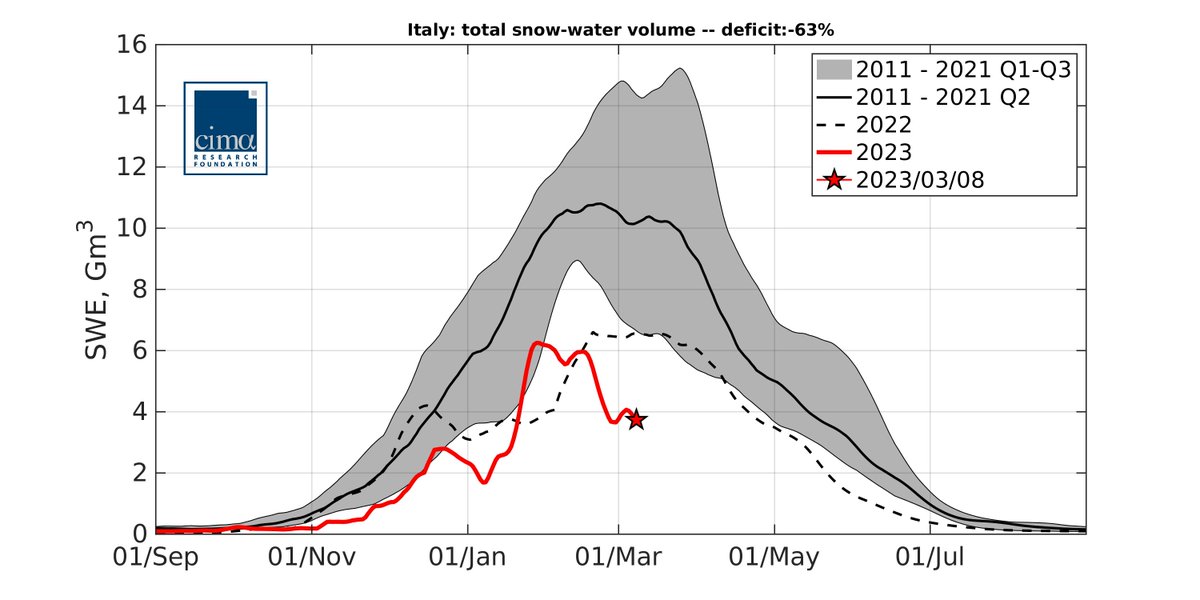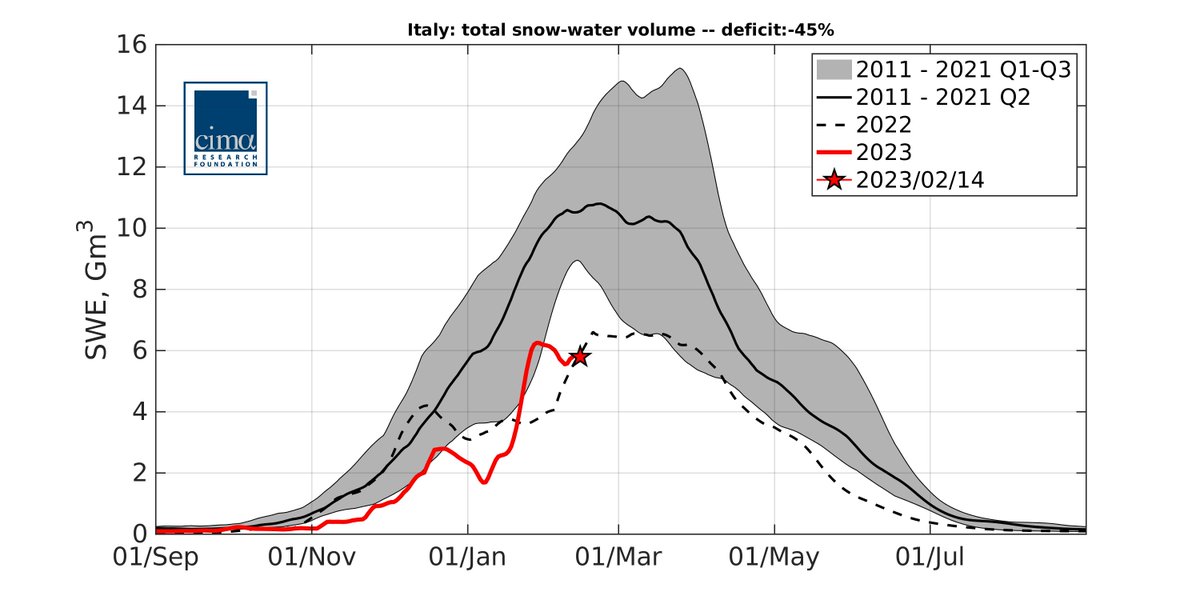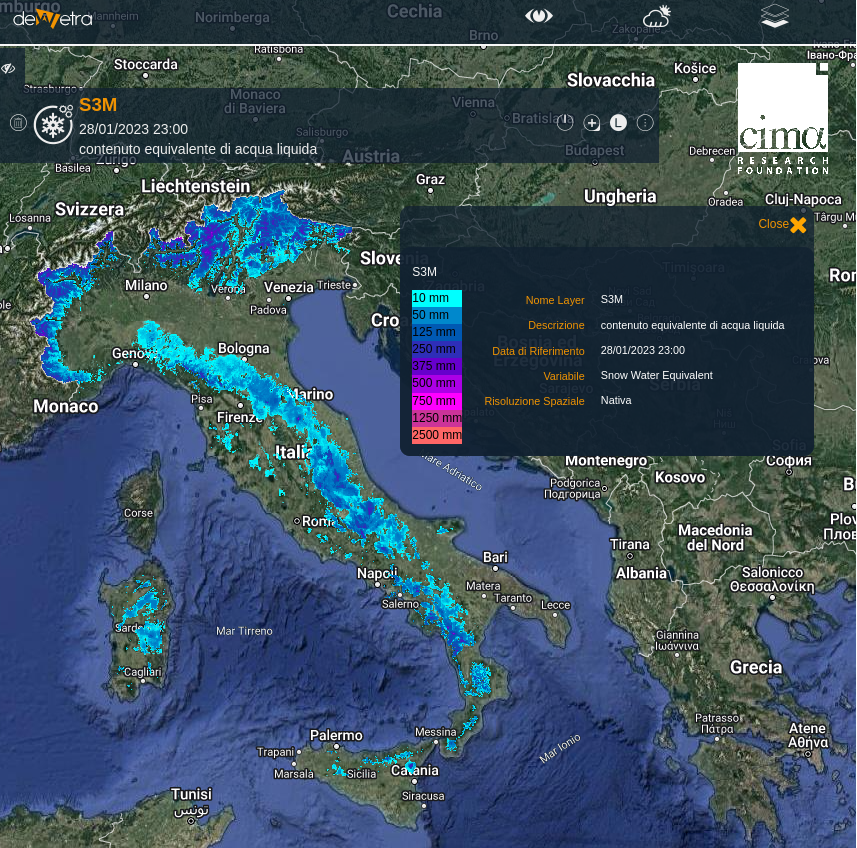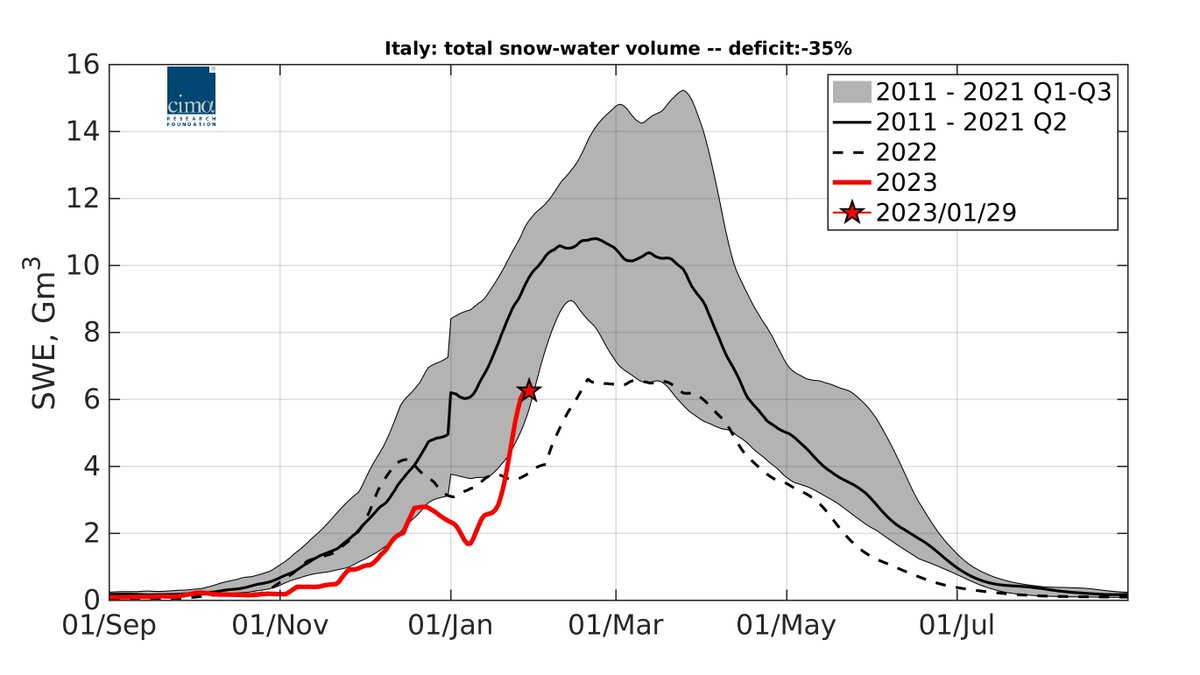
Dopo il freddo di fine febbraio, come sta andando il deficit di risorse idriche nivali in #Italia? Le nevicate non hanno cambiato molto, infatti stimiamo ancora un deficit del -63% 👇 Ad oggi abbiamo circa 1/3 della neve degli ultimi anni. @DPCgov
Un thread🧵👇
Un thread🧵👇

👆 L'avete notato? A fine gennaio eravamo in una situazione molto migliore.
Cosa è successo da allora?
A febbraio abbiamo avuto un periodo di caldo significativo, che ha esaurito circa 1/3 delle risorse idriche nivali.
Lo abbiamo imparato: temperature calde = meno neve...
Cosa è successo da allora?
A febbraio abbiamo avuto un periodo di caldo significativo, che ha esaurito circa 1/3 delle risorse idriche nivali.
Lo abbiamo imparato: temperature calde = meno neve...
Non solo per le #Alpi italiane il deficit è significativo. La maggior parte degli #Appennini è tornata in deficit dopo un gennaio nevoso. Anche qui, temperature così elevate non possono che portare ad una fusione della neve più rapida del solito e a un accumulo più breve. 

Il bacino del #Po ospita il 50% delle risorse idriche nivali italiane, fornendo acqua dolce a diversi settori economici ed ecosistemici. Qui il deficit è maggiore rispetto al quadro nazionale: -66%. La situazione è molto simile a quella del 2022, un anno già secco e caldo. 

Ecco il confronto tra la #neve del 2023 e del 2022!👇Mentre le Alpi sud-occidentali hanno recentemente goduto di un manto nevoso più consistente, il resto delle Alpi ha generalmente meno neve, soprattutto a basse quote. Si tratta di un #deficit sistemico su tutto l'arco alpino. 

Anche il fiume #Adige, altro grande contribuente alle risorse idriche nivali in IT, sta registrando un profondo deficit: -73%.
Vedete come le risorse idriche nivali hanno iniziato a diminuire a metà febbraio? Questo è l'effetto delle temperature miti invernali che stiamo vivendo.
Vedete come le risorse idriche nivali hanno iniziato a diminuire a metà febbraio? Questo è l'effetto delle temperature miti invernali che stiamo vivendo.

Con la maggior parte della stagione alle spalle, è giunto il momento di concentrarsi sulle implicazioni. Cosa abbiamo imparato dal passato?
Primo, che meno neve spesso porta a meno produzione di energia idroelettrica su scala alpina (dati idroelettrici di @TernaSpA).
Primo, che meno neve spesso porta a meno produzione di energia idroelettrica su scala alpina (dati idroelettrici di @TernaSpA).

Secondo, un anno caldo-secco come il 2022 ha visto il 50% in meno di neve, ma anche +40% di fabbisogno idrico per l'irrigazione👇In anni come questi, le ns montagne forniscono meno acqua da neve proprio quando ne avremmo bisogno di più.
Stime: VDA, in collab con @ArpaValledAosta.
Stime: VDA, in collab con @ArpaValledAosta.

Ricapitolando: la #neve che manca oggi sarà probabilmente l'#acqua che mancherà domani. Il 4 marzo è di solito il giorno di picco della neve in IT, quindi abbiamo superato il periodo con il maggior accumulo.
Ci aggiorniamo ad aprile, durante la fusione! bit.ly/3Yx5Z0p
Ci aggiorniamo ad aprile, durante la fusione! bit.ly/3Yx5Z0p
Questi dati provengono da S3M Italia, uno strumento operativo in tempo reale che abbiamo sviluppato per @DPCgov anche per stimare le risorse idriche nivali utilizzando modelli, dati satellitari e misure al suolo.
Dati dal 2010 liberamente disponibili qui: bit.ly/3F5UczA
Dati dal 2010 liberamente disponibili qui: bit.ly/3F5UczA

• • •
Missing some Tweet in this thread? You can try to
force a refresh


















